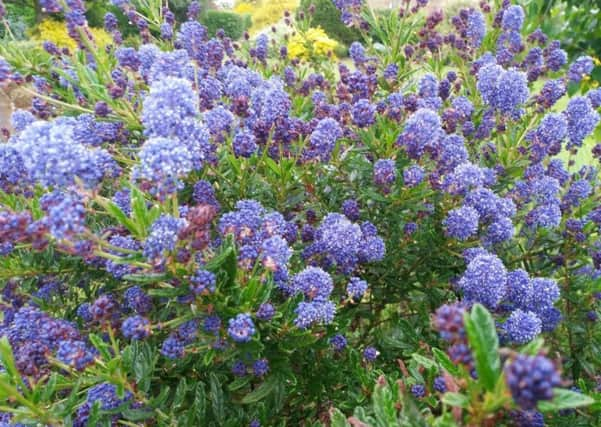Colourless '˜June gap' is now a thing of the past


All edible crops are safely under way, and a succession of ornamentals are shaping up to put smiles on faces throughout summer.
Add the birds, bees and butterflies factor to countless opportunities for propagation, and there’s little room for negative thought. This fellow’s glass is more than half-full.
Advertisement
Hide AdAdvertisement
Hide AdWhat is this life if, full of care, we have no time to stand and stare? The thought sprang to mind last Tuesday as our local garden club members wandered through The Alnwick Garden on one of those evenings we all pray for when an open-air visit is organised.
A multitude of fragrances – lilacs, sweet rocket, azaleas – filled the air, and the diversity of plants in bloom banished any lingering thought that there’s a shortage of flowering options for the May-June period.
In days of yore this was referred to as the ‘June gap’ because of an over-reliance on formal bedding schemes.
By the end of May, spring displays were spent and removed to make way for those of summer. Wallflowers, forget-me-not, polyanthus and tulips gave way to alyssum, lobelia, tagetes, geranium, et al. This resulted in an absence of full-on colour until new plantings gained maturity.
Advertisement
Hide AdAdvertisement
Hide AdThe occasional flowering shrub or herbaceous perennial would appear, but the gap remained.
It was new introductions, breeding programmes, F1 hybrids and improved blooming periods that changed the situation.
As we imbibed the Alnwick Garden atmosphere last week, there was enough evidence to suggest there will be no break in flowering. A myriad of ornamental perennials bloom whilst continuity awaits in the wings.
Shrubby abutilon, azalea and ceanothus have plenty in reserve. Robust flowering spikes of Cardiocrinum giganteum, at 2m high and still climbing, are about to perform. Similarly, two favourite hybrid tea roses, Chandos Beauty and Just Joey, are covered in plump flower buds.
Advertisement
Hide AdAdvertisement
Hide AdFlowers appearing on soft fruit bushes may not be as spectacular as those in borders, but oh how welcome they are. On the gooseberry and currant bushes they have already given way to a promising embryo fruit presence.
The strawberry bed holds several varieties to extend the season and is a mixture of flowers and small fruits at present so, following applications of straw between rows, the netting has been put in place. If only the blackbirds would wait until the fruits ripen and eat one at a time, rather than damage many.
In a recent survey, raspberries made the top 10 for flowers most frequently visited by bees. Unsurprising, given that they’re currently buzzing around ours. To net or not to net, that is the question?
The bed holds five varieties that extend the season from July to November, and heavy cropping potential means there is enough fruit for both parties.